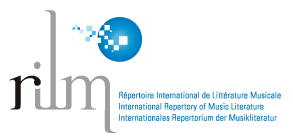La estratificación textural en la música de Charles Ives. Un análisis de The Unanswered Question (1906-1930/35).
Palabras clave:
Charles E. Ives, textura, estratificación, heterogeneidad, The Unanswered QuestionResumen
La estratificación textural en la música de Ives descansa en una acentuada individuación de los elementos que conforman la textura Esa individuación se hace posible una vez que los materiales se desarrollan con independencia de la totalidad que integran, pero que ya no los rige. La estratificación textural puede entenderse así como una crítica inmanente al carácter vinculante de la tonalidad. a su estatuto como elemento regulativo de la música en general y como sustrato de la logicidad de la simultaneidad en particular. La conjunción de elementos tales como la heterogeneidad e individuación de los materiales, la estratificación asociada a una simultaneidad desintegrada, y el tratamiento de la tonalidad como un material deshistorizado, puede observarse en The Unanswered Question, una obra que Ives compuso entre 1906 y 1930/35.
Descargas
Descargas
Publicado
Número
Sección
Licencia
Derechos de autor 2018 Pablo Fessel

Esta obra está bajo una licencia internacional Creative Commons Atribución-NoComercial 4.0.
Atribución/Reconocimiento-NoComercial 4.0 Internacional
https://creativecommons.org/licenses/by-nc/4.0/
Usted es libre de:
- Compartir — copiar y redistribuir el material en cualquier medio o formato.
- Adaptar — remezclar, transformar y construir a partir del material.
- La licenciante no puede revocar estas libertades en tanto usted siga los términos de la licencia
Bajo los siguientes términos:
- Atribución — Usted debe dar crédito de manera adecuada, brindar un enlace a la licencia, e indicar si se han realizado cambios. Puede hacerlo en cualquier forma razonable, pero no de forma tal que sugiera que usted o su uso tienen el apoyo de la licenciante.
- No Comercial — Usted no puede hacer uso del material con propósitos comerciales.
- No hay restricciones adicionales — No puede aplicar términos legales ni medidas tecnológicas que restrinjan legalmente a otras a hacer cualquier uso permitido por la licencia.
Avisos:
No tiene que cumplir con la licencia para elementos del material en el dominio público o cuando su uso esté permitido por una excepción o limitación aplicable.
No se dan garantías. La licencia podría no darle todos los permisos que necesita para el uso que tenga previsto. Por ejemplo, otros derechos como publicidad, privacidad, o derechos morales pueden limitar la forma en que utilice el material.






